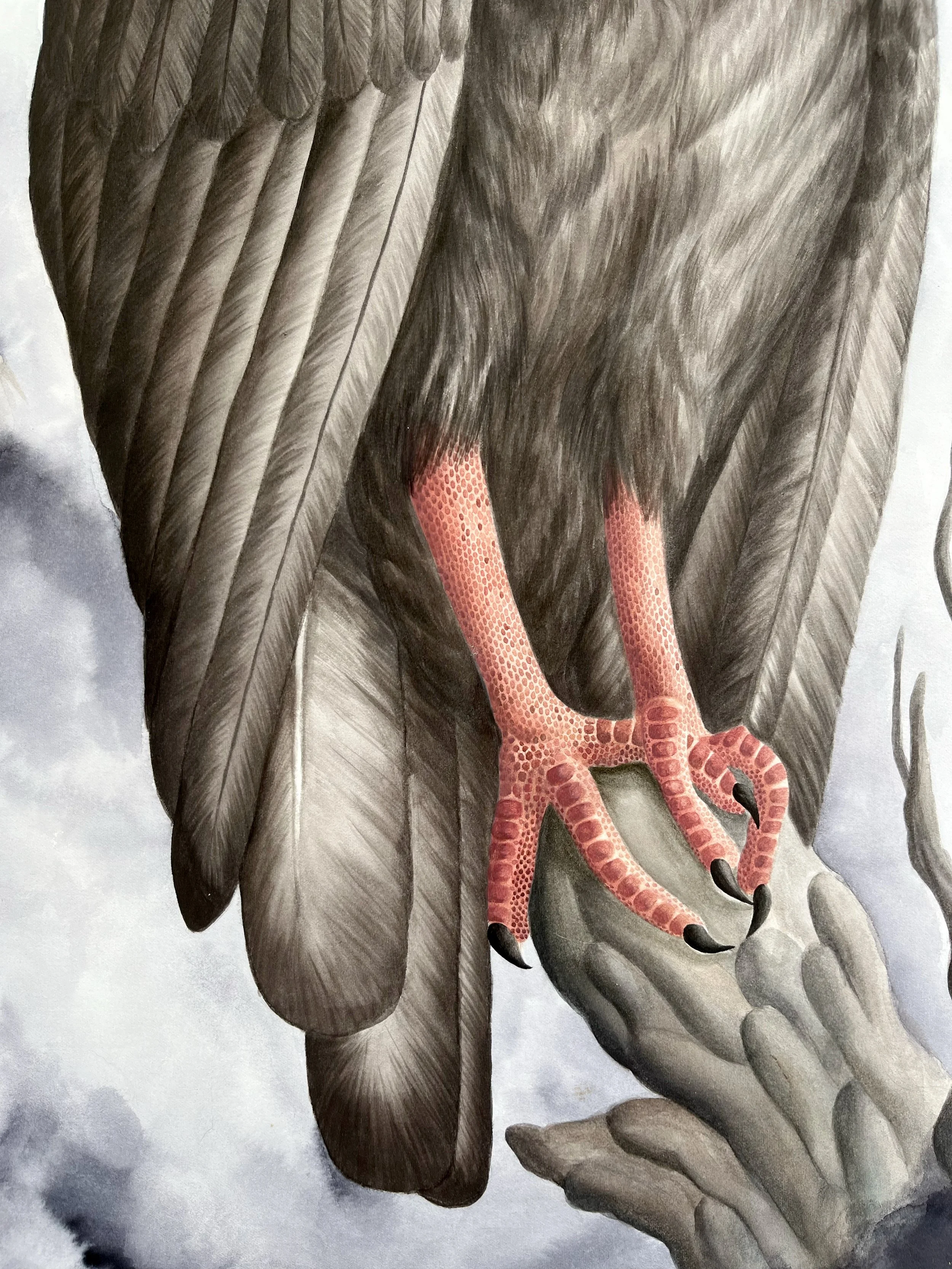Cathartidae
HPL Gallery,
June 4 - August 14, 2022
curated by Jennifer Marshall
Cathartes melambrotus
2020
watercolor on cotton paper
22 x 30 inches
Cathartes burrovianus
2020
watercolor on cotton paper
22 x 30 inches
Coragyps atratus
2019
watercolor on cotton paper
22 x 30 inches
Vultur gryphus
2020
watercolor on cotton paper
22 x 30 inches
Sarcoramphus papa
2020
watercolor on cotton paper
22 x 30 inches
Gymnogyps californianus
2020 / 2022
watercolor on cotton paper
22 x 30 inches
Cathartes aura
2019
watercolor on cotton paper
22 x 30 inches
Cathartidae, the Greek root of our “catharsis,” is the Family to which belong the seven extant species of New World vultures. These seven are the turkey vulture (Cathartes aura), black vulture (Coragyps atratus), king vulture (Sarcoramphus papa), lesser yellow-headed vulture (Cathartes burrovianus), greater yellow-headed vulture (Cathartes melambrotus), Andean condor (Vultur gryphus), and California condor (Gymnogyps californianus). While often initially frowned upon as filthy or dull birds, vultures play an invaluable role in the ecosystem, eradicating decaying remains that might otherwise pollute and disease the landscape. In a sense, act as agents of catharsis for Mother Nature, purging her of what is toxic and initiating a rebirth of that once toxic material. Understanding and valuing the physical role that vultures play is one goal of this work, but another is to challenge how the symbol of the vulture might be adopted in the metaphysical sense.
Each of the seven vultures are represented suspended in an ambiguous and misty matrix. While each represented species can be identified by its physical attributes, the scientifically accurate birds are decidedly not placed in atmospheres that recollect any earthly location. Instead they seem firmly planted within a dreamscape or some emotional landscape that speaks to individual interiority. Thus the vultures might also be seen as agents to aid in the catharsis of the individual. As the alchemists would have put it, In sterquilinius invenitur, or “in filth in will be found.” This phrase is typically most understood as the answers you seek are found where you least want to look. The vulture, while grotesque or unattractive at first glance, is a creature not only capable but also equipped to sort through the filth and chaos of decay, whether that be physical or emotional or otherwise. The body of Cathartidae then asks you to reevaluate your perceptions of the vulture, and come to value what might have first been feared out of misunderstanding.




